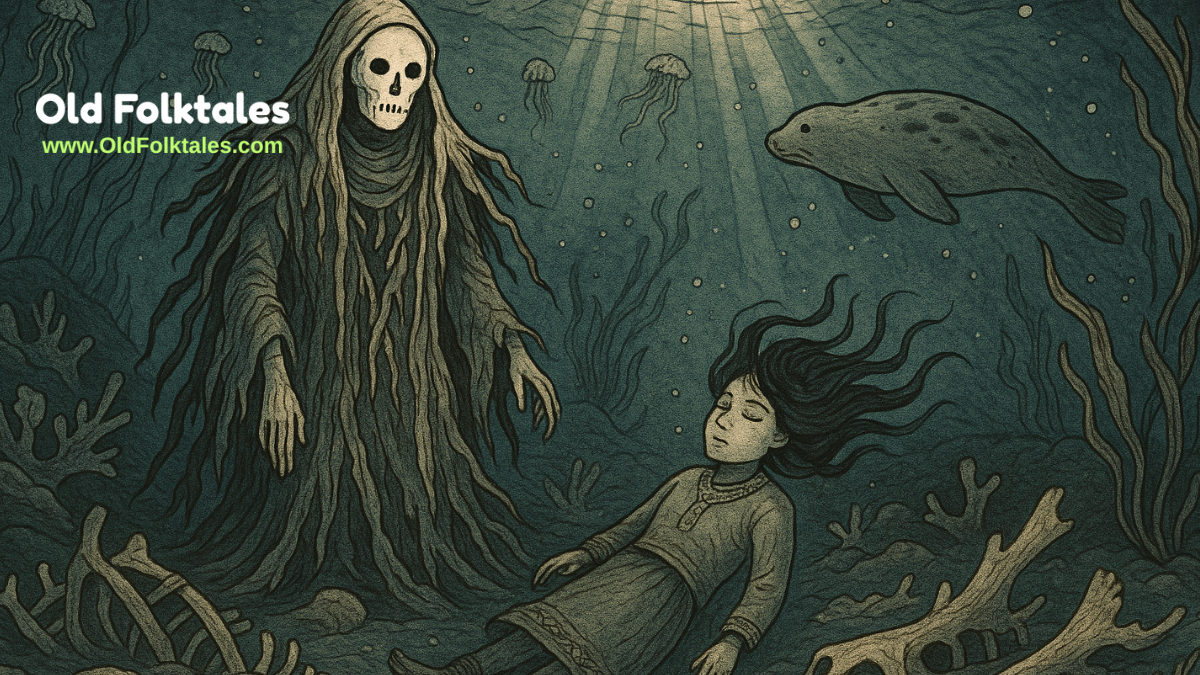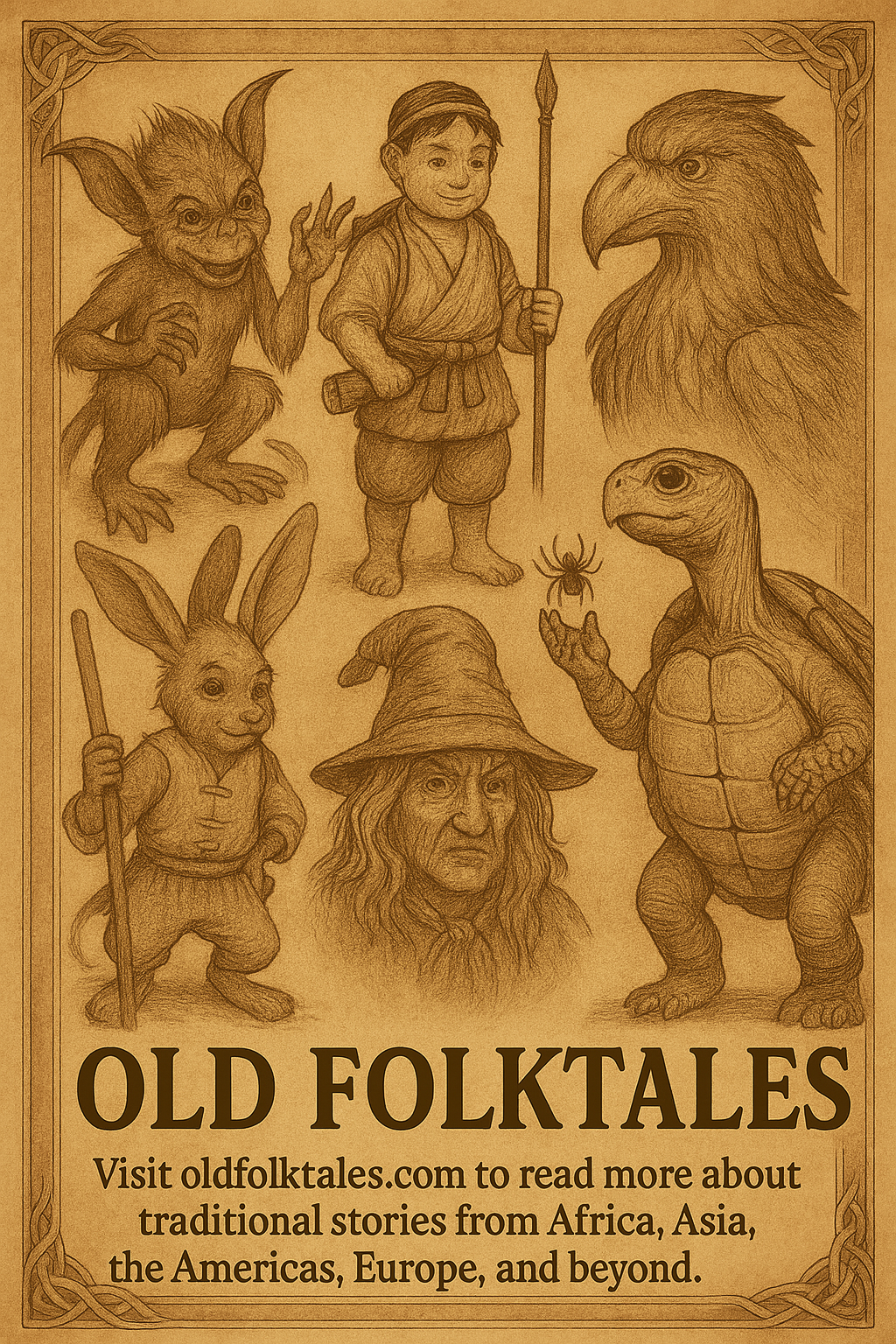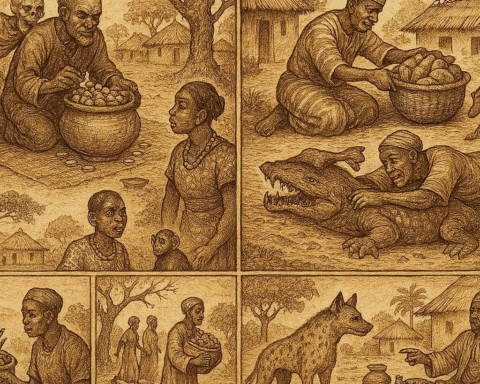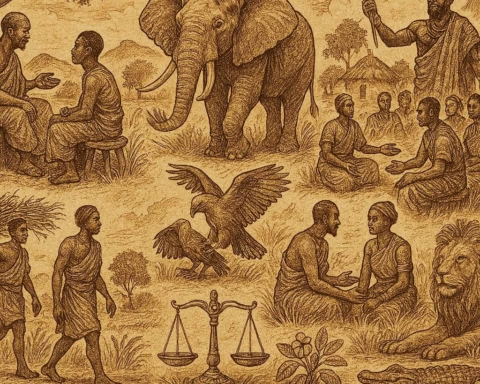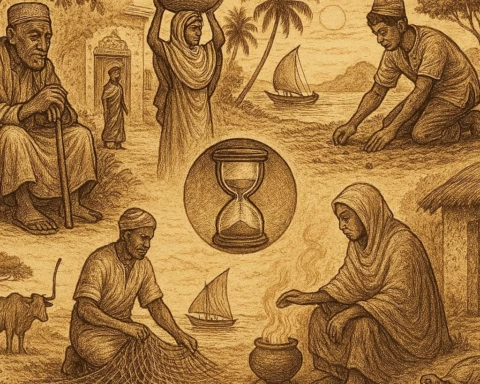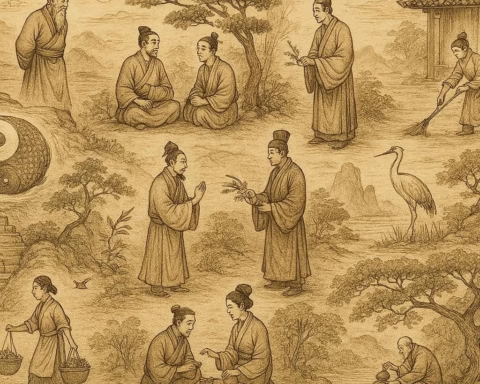Long ago, before the wind whispered through snow-dusted caribou hides, before humans built their shelters from ice and bone, the Inuit people told of a spirit who lived beneath the ice , Aqpiqsuuq, the Bone Woman.
In a small seal-hunting village along the Arctic shore, there lived a girl named Ijira. She was not like the others. Her eyes always lingered too long on shadows, her feet often wandered far from the igloos, and she listened when no one else could hear. While the other children played, Ijira sat by the sea, watching the cracks form and melt on the ice.
One spring, the seal catch was thin. The village elders feared starvation. “We must honor the sea spirits,” said Grandmother Tulugaq: “Or they will keep their bellies full while ours grow empty.” Ijira, stirred by something deeper than hunger, asked, “What if I spoke to them?”
The village laughed. “A child talking to spirits?” But Grandmother Tulugaq did not laugh. She stared into Ijira’s eyes and whispered: “If the Bone Woman hears you, she may listen. But she may not let you return.”
That night, Ijira took nothing but a bone-handled ulu and followed the moonlight to the shore. She walked onto the thin spring ice, far from the safety of land, where no footprints remained.
Suddenly, the ice cracked.
Ijira fell.
Down into the freezing black she plunged, through ink-dark waters, past drifting fish and glowing jelly trails, until she reached the floor of the sea.
There, among skeletons of whales and twisted driftwood, she saw her.
The Bone Woman.
She wore robes of sinew and kelp, and her face was made of carved bone, hollow and ancient. Her voice sounded like a thousand cracking glaciers.
“Why have you come, child?”
Ijira, shivering but unafraid, said: “To ask why the sea does not feed us.”
The Bone Woman tilted her head. “You speak with the voice of the old world. Few remember me.”
She circled Ijira slowly: “The sea does not forget when hunters grow greedy. You take more than needed. You waste. You forget to thank.”
“I didn’t forget,” Ijira said.
The Bone Woman leaned close: “Then I will give you a gift. But first, you must die.”
Ijira’s breath stopped.
Her heart slowed.
Her body crumpled like kelp in the tide.
The Bone Woman lifted her and sang. The song rose like a storm, not with words, but with wind and grief. Bones rattled, currents swirled, and a seal spirit swam close to witness.
Ijira’s body slowly came apart, bones separated from flesh, soul from skin.
But she did not disappear.
Instead, she reformed.
New bones grew.
Her spirit stitched itself together again.
When she opened her eyes, she was alive, and more than alive. Her breath smelled of sea salt. Her bones glowed with cold wisdom. The Bone Woman whispered, “Return. Teach them.”
The sea spat her back out at the shore.
The village thought her dead. But she walked from the surf, not with fear, but with knowledge.
From that day forward, Ijira became a spirit-walker, one who spoke with seals before hunting, who blessed each bone before burying it, who never wasted a drop of blood.
The seal harvest returned.
The spirits calmed.
And under the ice, the Bone Woman watched in silence, waiting for the next one who would remember her name.
Moral Lesson of The Bone Woman of the Arctic Ice
The folktale The Bone Woman of the Arctic Ice teaches the importance of respect and gratitude toward nature. It reminds us that life is a gift that can be taken and returned, but only when approached with humility. In a world where survival depends on the balance between giving and taking, forgetting to honor the spirits that sustain us can lead to suffering. But remembering them can restore harmony.
Knowledge Check
- What is the moral of the folktale “The Bone Woman of the Arctic Ice”?
The story teaches a lesson about respect for nature, showing how the community’s neglect led to scarcity until a brave girl restored balance through humility and sacrifice. - What cultural group does the tale “The Bone Woman of the Arctic Ice” come from?
This folktale originates from the Inuit tradition of the Arctic Circle. - Why did Ijira descend beneath the sea in “The Bone Woman of the Arctic Ice”?
In the story, Ijira went beneath the sea out of obligation to save her starving village, which led to her encounter with the ancient sea spirit. - How does the folktale “The Bone Woman of the Arctic Ice” explain spiritual beliefs about death and resurrection?
The story offers a traditional view that death is not always an end, but a transformation, and that spirits like the Bone Woman guard the power of life and renewal. - Is “The Bone Woman of the Arctic Ice” a ghost story, origin tale, trickster story, or spirit tale?
The Bone Woman of the Arctic Ice is a spirit tale, reflecting Inuit beliefs in powerful sea spirits that influence life, death, and natural abundance. - Why is the tale “The Bone Woman of the Arctic Ice” still meaningful to modern readers?
The story remains relevant today because it highlights timeless truths about respecting nature, listening to ancestral wisdom, and restoring balance when it is lost.
Cultural Origin:
This folktale comes from the traditional beliefs and storytelling practices of the Inuit people of the Arctic Circle.
